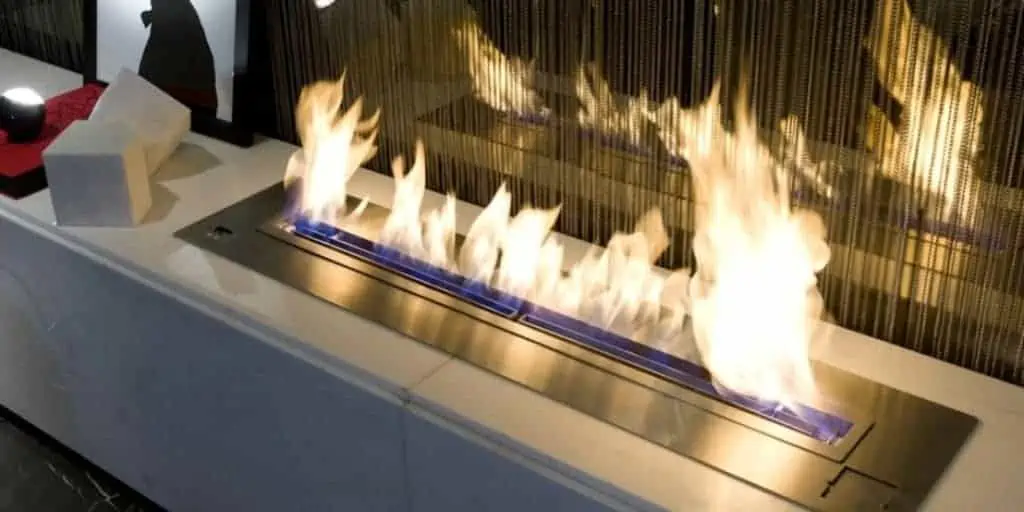If you’re looking for a more comfortable and efficient way to heat your home, it’s fair to wonder what the most common heating system in Canada is.
After all, if a lot of other people are using it, that’s probably a sign that the heating system’s pros outweigh its cons, right?
Well…it’s more complicated than that. Once a home is built, it tends to stick with the same heating system for decades, if not for its entire lifespan.
Heating system technology, though, continues to improve, so – while many homes may have a system that was good at the time it was installed – the best heating system for your home might be different than the most common one.
Unpacking the numbers from Stats Canada
What would one Vancouver plumbing and heating company know about nationwide heating system installation rates, you ask?
That’s a fair point. While we know plenty about the frequency and types of heating systems around Metro Vancouver, the rest of Canada is a different story.
Fortunately, we have Stats Canada’s census data on primary home heating systems plus their 2023 heating report.
They’ve already told you where each system is most popular. Instead, we’ll be combining their numbers with our 50+ years of plumbing experience, providing insight into how each heating system works and whether they make sense for most homeowners.
Forced-Air Furnace
This is it — Canada’s most common residential heating system. Powered by an electric or natural gas furnace, it uses a system of ducts and vents to deliver warm air to each connected room.
As of 2021, 51% of households reported it as being their primary way of keeping their living spaces warm. Does that mean it’s automatically the best option for your home? Not necessarily.
Forced-air furnaces offer a great balance between energy efficiency and economical installation. They’ve been around for decades, can be powered by electricity or natural gas, and are a very mature technology overall, especially compared to some of the newer options available to Canadians like heat pumps.
They’re still a strong choice for heating, especially if you have a newer, well-insulated home, but they have limitations in terms of efficiency and comfort that other (admittedly often pricier) systems don’t come with.
If you’re open to renovating your home, or if you’re building a new one, it’s certainly worth looking into – and budgeting out – the cost of other types of heating systems, especially if you’re looking for better comfort and efficiency.
Electric Baseboard Heaters
About a quarter of homes (24%) rely on this type of heating. In some ways, it’s surprising that electric baseboard heaters aren’t more common in Canadian homes.
They’re compact, easy to install, and can be readily added to almost any room without extensive renovations. Used properly, they can be great for efficiency as well.
So why haven’t they become the go-to for households? It’s because they aren’t ideal for whole home heating.
If you’re asking a baseboard heater to heat a small, closed room, it performs very well. But when it comes to maintaining a set temperature throughout an entire home, baseboard heaters effectively need to run non-stop, which makes them much more expensive to operate compared to other systems like furnaces or boilers.
The keyword here is “primary” heating system. Unless you have a very small home or apartment, it’s best to choose another heating system and stick to using baseboard heaters for supplemental heating in rooms where you can keep the heat in.
Boiler & Radiator(s)
The word “boiler” might bring to mind images of great old steamships and the age of industrialization, but around 1 in 10 Canadian homes actually uses a boiler-based heating system.
Surprising? Maybe not. Modern boiler and radiator systems have a lot of advantages over forced-air HVAC systems, and companies are still creating new and improved versions of the technology.
They can have lower costs to operate, less maintenance, and – since they don’t constantly circulate warm air – they don’t make your home feel as dry and dusty as a forced-air system can.
Even the namesake boiler tank might be on the way out — tankless water systems make it possible to supply radiators with water just when they need it, giving homeowners cost *and* space savings.
Okay, so what’s the catch? Cost and risk.
Sending hot water all around your home means that every room needs additional piping to be installed, which adds to the upfront cost of installation. It also means more opportunities for water damage if one of those pipes ends up leaking.
It’s up to homeowners to consult with professionals and weigh all the factors to decide whether this type of heating system is right for them.
Radiant Floor Heating
Instead of having heat gradually spread out through a room from a vent or radiator, radiant heating distributes heat evenly throughout an entire room.
It does that through a network of hot water pipes or heating elements installed below the floor. This eliminates the feeling of cold floors and provides steady, even heat in each room that it’s installed in.
Hydronic Radiant Floor Heating
Hydronic heating is similar to a boiler and radiator system in that it also relies on a boiler to heat and distribute water around your home as a way of regulating temperatures. Compared to forced-air heating, a well-installed hydronic system can cost less to operate and require less maintenance.
Unlike with radiators, however, you enjoy much more even heating and better energy efficiency. Sounds great, right? It is — if you can handle the upfront cost.
With installation costs of up to $50,000, putting in a hydronic system can cost 2-4 times more than a typical HVAC or boiler system installation.
Stats Canada doesn’t distinguish between boiler systems that use radiant heating and those that use radiators, but – in our experience – radiant floor heating seems to be a less common option in Canadian homes.
Electric Radiant Floor Heating
If you’ve ever used a heated blanket or even just looked at the inside of an oven, you’re on the right track to understanding how electric radiant heating works.
It uses a set of heating elements, encased within a material like cement board or ceramic tile beneath the floor, to deliver wall-to-wall heat.
On average an electric radiant system costs about $20,000 – $30,000 to install. Still not priced in line with similar boiler or forced-air systems, but much closer than a hydronic system.
Have the benefits been significant enough to convince Canadians to pay a bit more? Well, not quite. Only about 4% of Canadian homes have electric radiant floor heating, and there’s probably a good reason for that.
Aside from the added cost, electric radiant floors typically aren’t as effective at whole home or room heating as hydronic ones. They’re great for keeping your floors warm, but that makes them more of a luxury than a proper home heating system.
Air-Source Heat Pump
These days, it’s hard to look into buying a heating system without seeing or hearing something about heat pumps.
They’ve seen a massive rise in popularity thanks to their higher energy efficiency numbers and ability to provide both heating and cooling from a single unit. That’s reflected in the numbers from Canada’s energy regulation agency, which show that, over the past 15 years or so, interest in heat pumps has steadily grown.
There were only about 400,000 heat pump installations nationwide in 2000; by the time 2016 rolled around, that number had nearly doubled, and it’s quite likely that – as of this writing in 2023 – that the rate of installations has picked up.
Still — are you likely to find a heat pump in most Canadian homes? Far from it.
The latest census data shows that only about 6% of households are using a heat pump as their primary heating source. It’s gaining ground, but it has a long way to go before it’s anywhere close to replacing baseboard heaters, let alone furnaces.
What about geothermal heat pumps?
Geothermal heat pumps provide outstanding efficiency and heat generation, but it’s extremely rare to find one heating a home in Canada.
Why? It all comes down to the cost of installation relative to the amount of energy saved. While a heat pump unit itself costs roughly as much as a typical furnace, installing a geothermal exchange system can cost $20,000 to $30,000.
That’s a labour intensive process by itself, and once you start adding in the cost of engineering assessments, municipal approvals, and the challenge of working around existing gas and electrical lines, there’s a massive amount of work and money involved.
For most homeowners, navigating through those kinds of challenges just isn’t worth it, even taking into account the exceptional energy efficiency that the system provides.
Wood Burning
Wood burning stoves are relatively uncommon in Canada, but your likelihood of running into one really depends on where you are in the country.
As you might imagine, homeowners in major cities tend not to rely on wood burning as their primary home heating method. That’s understandable — hydroelectric and natural gas heating options are much cleaner and more convenient compared to sourcing, storing, and burning wood just to stay warm.
In Canada’s rural areas, however, it’s a different story. Stats Canada says that as many as 88% of households outside of “big cities” own a wood burning stove, although there’s no word on whether all of them were using it as their primary source of heating.
It’s not always a case of one or the other
That’s easy to forget as you start weighing the pros and cons of each system, but it’s an important nuance to remember. You don’t necessarily have to pick just one kind of heating system.
Many homes across the country already feature a mix of heating systems, like a forced-air furnace supplemented with electric baseboard heaters in certain rooms.
At the end of the day, it’s not about finding the best or most popular system on paper, it’s about finding the best way to heat your home comfortably and efficiently.
Need help choosing and installing a heating system in Metro Vancouver?
As you can see, there’s a lot to consider when you’re choosing your home’s primary heating system, and what’s popular might not be the best option for your home.
If you’re looking for an expert’s opinion on the right heating system configuration for your home, our experts would be glad to help! You can book a free in-home assessment by contacting us online or by phone at (604) 879-1415.

